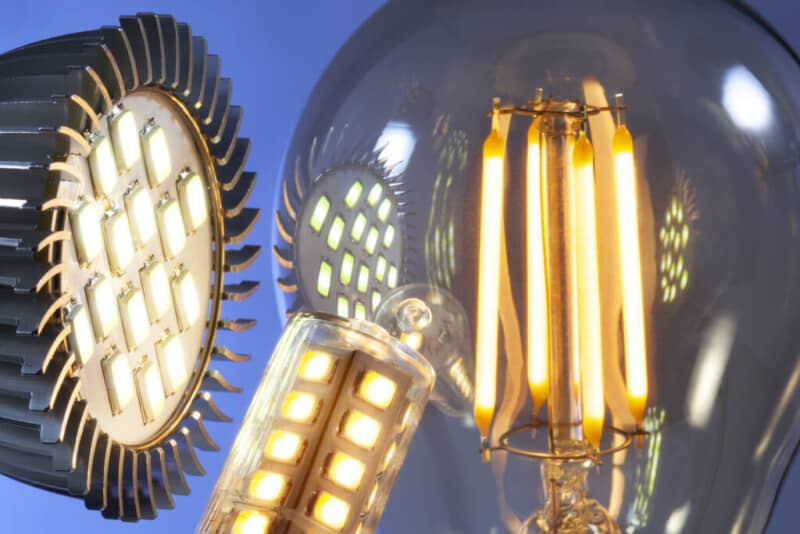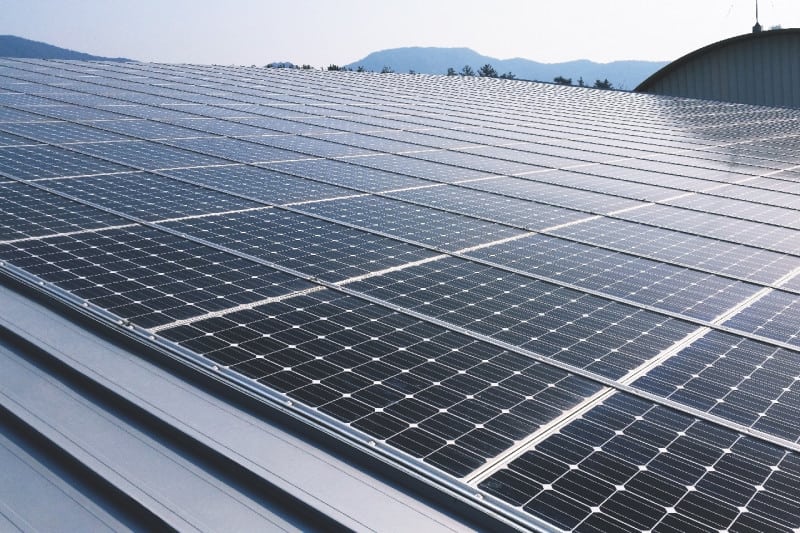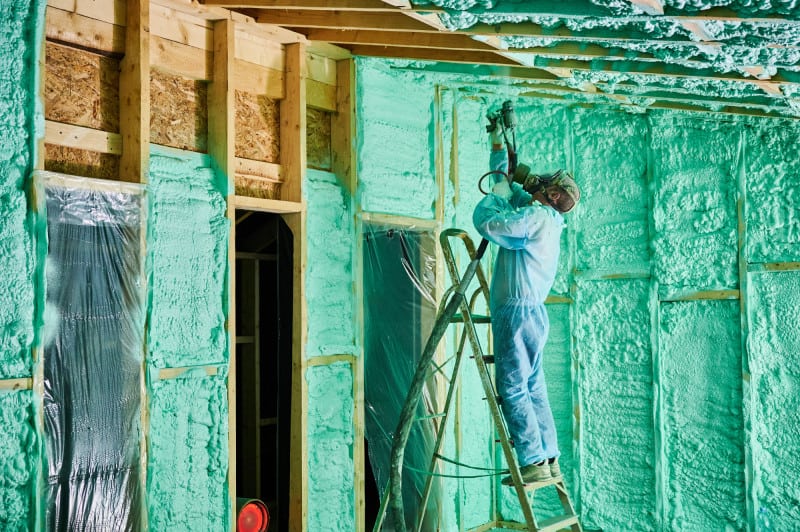You might think switching to energy-saving lights is just a drop in the bucket when it comes to air quality, but you’d be surprised at their profound impact.
When you choose LED bulbs, you’re not only reducing energy consumption, but you’re also cutting down on the demand for electricity from power plants, which are significant sources of air pollution.
Less energy used means fewer fossil fuels burned, leading to a decrease in the amount of smog-forming gases and particulate matter released into the atmosphere.
As you serve your community by lighting homes and streets, remember that energy-saving lights are an easy, yet powerful, tool in the fight for cleaner air.
They not only illuminate spaces but also pave the way for a healthier environment for everyone to breathe easier.
Key Takeaways
- LED lights reduce greenhouse gas emissions, improving air quality.
- LEDs have a longer lifespan, reducing the need for frequent replacements and waste.
- LED lights do not emit harmful UV radiation, minimizing health risks.
- LEDs contribute to energy efficiency and lower electricity consumption, reducing environmental impact.
LEDs and the Environmental Domino Effect
How do you benefit from cleaner air when you switch your home’s lighting to LED bulbs?
The transition to LED lighting is a strategic decision that aligns with efficiency metrics, ultimately contributing to significant heat reduction.
This isn’t merely a matter of lowering your electricity bill; it’s about reducing the demand for energy from power plants, which are often sources of air pollution.
By embracing LEDs, you’re actively participating in resource conservation, ensuring the energy utilized is maximized with minimal waste.
LED bulbs are integral to smart integration in modern homes.
Their compatibility with automated systems not only optimizes energy use but also fosters an environment where you can control and reduce your carbon footprint effortlessly.
This intelligent approach to energy consumption directly translates to fewer greenhouse gases released into the atmosphere, thus purifying the air you breathe.
LEDs emit no ultraviolet light, which significantly diminishes wildlife impacts, particularly for nocturnal species disrupted by traditional lighting.
Cleaner air is a collective benefit that stems from individual choices to adopt more sustainable technologies.
LEDs vs. Ozone and Particulate Pollution
Switching to LED lighting in your home not only saves energy but also plays a crucial role in reducing the formation of smog by cutting down on ozone and particulate emissions.
The energy metrics of LEDs are superior to traditional lighting options, which translates to less electricity consumption and, consequently, fewer emissions from power plants—a primary source of urban smog.
By mitigating the energy demand, you’re directly contributing to the reduction of pollutants that form ozone and particulate matter.
Technological advancements in LED manufacturing have enhanced light quality, ensuring that comfort and visibility aren’t sacrificed for environmental benefits.
This progress ensures that the adoption of LEDs can be widespread, amplifying their positive impact on air quality.
The long lifespan of LEDs means fewer replacements and, importantly, less waste. Coupled with emerging recycling solutions for LED products, the environmental footprint of lighting is substantially reduced.
The health benefits of decreasing smog are profound. By embracing LED technology, you’re not only aiding in the fight against climate change but also protecting public health.
Each LED fixture you install acts as a guardian for clean air, disrupting the cycle that contributes to the dirty duo of ozone and particulates, serving the community and the planet alike.
Your Defense Against Indoor Air Hazards
LEDs stand at the forefront of VOC reduction, not by actively purifying the air, but by avoiding the chemical emissions associated with traditional lighting options.
Their technical prowess lies in their ability to operate without releasing additional pollutants into your living space.
When you switch to LEDs, you’re not just enhancing energy efficiency, you’re also reaping health benefits.
Unlike their incandescent predecessors that may contribute to indoor VOC levels through their heat output, LEDs minimize the potential for these harmful compounds to off-gas from walls, furniture, and other household items.
This reduction in VOCs is critical for maintaining a healthier indoor environment.
LEDs offer mercury avoidance, an essential consideration given the toxic nature of mercury found in certain fluorescent bulbs.
The durability advantage of LEDs is unmatched, ensuring a longer lifespan and fewer replacements.
This longevity translates into less waste and a sustained commitment to both energy conservation and the minimization of indoor air pollutants.
Empowering Communities with Energy-Saving Lights
You’ll find that every energy-efficient bulb you install not only cuts down on your electricity bill but also serves as a beacon of hope for communities disproportionately affected by environmental pollution.
Equity illumination is more than a concept; it’s a transformative strategy that ensures all communities, especially those vulnerable and historically marginalized, benefit from the transition to energy-efficient lighting.
Through financial accessibility to these technologies, you support sustainable development where it’s needed most.
Incorporating energy-saving lights in these areas can significantly improve community health.
Reductions in energy consumption lower greenhouse gas emissions and decrease the reliance on fossil fuels, which are often processed in close proximity to low-income neighborhoods, causing adverse health effects.
You’re part of a larger movement that advocates for clean air as a fundamental right.
Policy incentives are crucial in this endeavor. They must prioritize not just the distribution of energy-saving technologies but also the education and engagement of these communities in energy conservation practices.
Your support for such policies amplifies the call for climate justice, ensuring that the benefits of clean energy and improved air quality are shared equitably.
Sparking a Renewable Grid Revolution
As you adopt LED lighting, you’re not just reducing your carbon footprint; you’re also fueling a shift towards renewable energy sources.
LED efficiency significantly lowers electricity demand, which in turn eases the grid impact.
This consumption reduction is pivotal, as it allows for a smoother integration of variable renewable energy sources like solar and wind into the grid.
The technical prowess of LEDs aligns with the principles of renewable synergy.
This synergy is essential for creating a resilient energy ecosystem where supply meets demand without the need for carbon-intensive backup systems.
Your choice to switch to LEDs isn’t solely an individual act of environmental stewardship; it’s a catalyst in the broader innovation illumination.
Each LED installation contributes to a collective demand for green technologies, incentivizing further advancements and economies of scale.
As a result, the adoption rate of renewables accelerates, reinforcing the infrastructure needed to sustainably power communities and facilitate social well-being.
In essence, your decision leverages the power of LEDs to forge pathways for cleaner energy solutions, proving that every action, no matter how small, holds the potential to ignite systemic change.
Conclusion
Switching to LEDs is a no-brainer if you care about clean air and want to do your part for the community and the planet.
Not only do these energy-saving heroes slash your electricity bills, they also cut emissions and pollution from power plants – which contribute the most to air quality.
But it’s about more than just my wallet or my family’s health – by lighting our homes, streets and businesses with efficient LEDs, we empower marginalized neighborhoods, forge pathways for renewable energy, and spark a cleaner grid revolution.
With all those benefits stacked up, why wouldn’t you make the switch?
It’s one small act that serves as a beacon of hope and has the power to ignite systemic change for healthier air for all.
Sure, some old-school folks may call me a treehugger for touting LEDs, but that’s a badge I’ll proudly wear if it means inspiring and mobilizing others to join this illumination movement.





